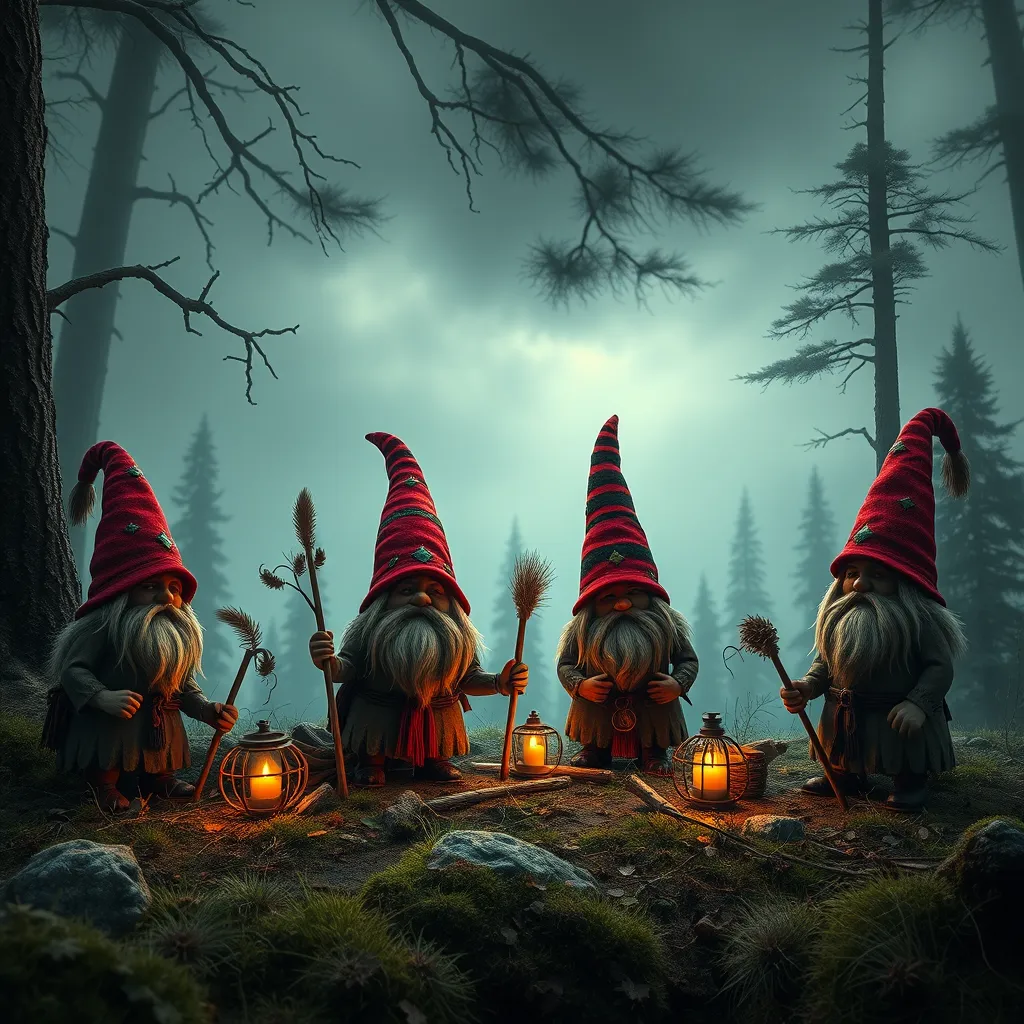Native American Gnomes: The Little People of the Woodlands
I. Introduction to Native American Gnomes
Native American gnomes, often referred to as the ‘Little People,’ hold a significant place in the folklore and cultural stories of various tribes across North America. These mystical beings are not merely whimsical characters but are deeply embedded in the spiritual and moral fabric of Native American traditions. They represent the connection between humans and the natural world, embodying the values and teachings passed down through generations.
The term ‘Little People’ encompasses a variety of small, mythical beings believed to inhabit the woods, mountains, and rivers. They are often portrayed as guardians of nature, protectors of the wilderness, and teachers of important life lessons. Their presence in folklore serves as a reminder of the delicate balance between humanity and the environment.
II. Historical Context of Native American Gnomes
The belief in gnomes and the Little People can be traced back to ancient times, with origins that vary among different tribes. These beliefs often emerged in conjunction with the spiritual practices and environmental awareness of indigenous peoples. The stories surrounding these beings have been passed down orally, evolving over centuries into the rich tapestry of Native American mythology we know today.
Anthropological insights reveal that the concept of Little People is not unique to one tribe but is a common theme across many cultures. Early European settlers documented encounters with Native American tribes, noting their stories about small, elusive beings that could be both helpful and mischievous. These accounts provide valuable context for understanding the significance of gnomes in Native American culture.
III. Regional Variations in Gnome Beliefs
Beliefs about gnomes and Little People vary widely among different tribes and geographic regions. While they share some common characteristics, each culture has its unique stories and interpretations. Here are a few notable examples:
- The Ojibwe: They speak of the ‘Manidoog’ or spirits that are often associated with nature, including small creatures that help maintain balance in the ecosystem.
- The Zuni: Their legends include the ‘Kachinas,’ which are spirit beings that represent various aspects of nature and are often depicted as small figures.
- The Cherokee: Their stories include references to the ‘Little People,’ who are said to live in the mountains and are known for their trickster qualities.
These regional variations highlight the diversity of beliefs and narratives surrounding gnomes, reflecting the unique relationship each tribe has with its environment.
IV. Characteristics and Traits of Native American Gnomes
Native American gnomes are often described with distinct physical and behavioral traits. These characteristics help to shape their roles in folklore:
A. Physical Descriptions and Attributes
Gnomes are typically depicted as small, humanoid beings, often no taller than a human child. Their appearances can vary significantly, but common traits include:
- Short stature and stocky build
- Long beards or hair
- Wearing earthy tones or natural materials
B. Behavioral Traits and Abilities Attributed to Gnomes
The Little People are often portrayed as playful yet wise. They possess a variety of abilities, including:
- Being skilled in magic and healing
- Having the power to protect nature and animals
- Exhibiting trickster behavior, teaching lessons through mischief
V. The Role of Gnomes in Native American Mythology
In Native American mythology, gnomes serve several important roles:
A. Symbolism and Representation in Spiritual Practices
Gnomes symbolize the interconnectedness of all living things and the importance of respecting the natural world. They are often invoked in rituals and stories to teach about balance, harmony, and the need for stewardship of the Earth.
B. Gnomes as Guardians of Nature and the Woodland Ecosystem
These mystical beings are seen as protectors of the environment, ensuring that nature thrives and that human actions do not disrupt the delicate ecosystems. Their stories often serve as cautionary tales about the consequences of neglecting our responsibilities towards the Earth.
VI. Gnomes in Modern Native American Culture
The legacy of gnomes continues to influence contemporary Native American culture. Their stories and symbolism are incorporated into various forms of art and literature:
A. Influence on Contemporary Art and Literature
Many Native American artists draw inspiration from gnome folklore, creating works that reflect the themes of nature, spirituality, and cultural identity. Writers also weave these tales into modern narratives, keeping the stories alive for new generations.
B. Preservation of Gnome Folklore in Modern Storytelling
Storytelling remains a vital part of Native American culture, with gnome legends being passed down through community gatherings, educational programs, and cultural events. This preservation helps to maintain a connection to ancestral traditions and reinforces the importance of environmental stewardship.
VII. Gnomes and Environmental Stewardship
The lessons derived from gnome folklore extend beyond entertainment; they offer valuable insights into environmental conservation:
A. Lessons from Gnome Folklore Regarding Nature and Conservation
Many stories about gnomes emphasize the need to respect and protect the natural world. They serve as reminders that every creature, no matter how small, has a role in the ecosystem and that human actions have far-reaching consequences.
B. Gnomes as a Metaphor for Respect Towards the Environment
Gnomes can be seen as a metaphor for the respect and care that should be afforded to all aspects of nature. Their presence in folklore encourages mindfulness and responsibility in how we interact with our surroundings.
VIII. Conclusion
The enduring legacy of Native American gnomes, or Little People, reflects the deep-rooted connections between culture, spirituality, and the environment. As we continue to explore and celebrate these stories, it becomes increasingly important to preserve the rich tapestry of indigenous folklore and cultural heritage.
By recognizing the significance of gnomes in Native American traditions, we can foster a greater appreciation for the wisdom they impart and the vital lessons they teach about living harmoniously with nature.



